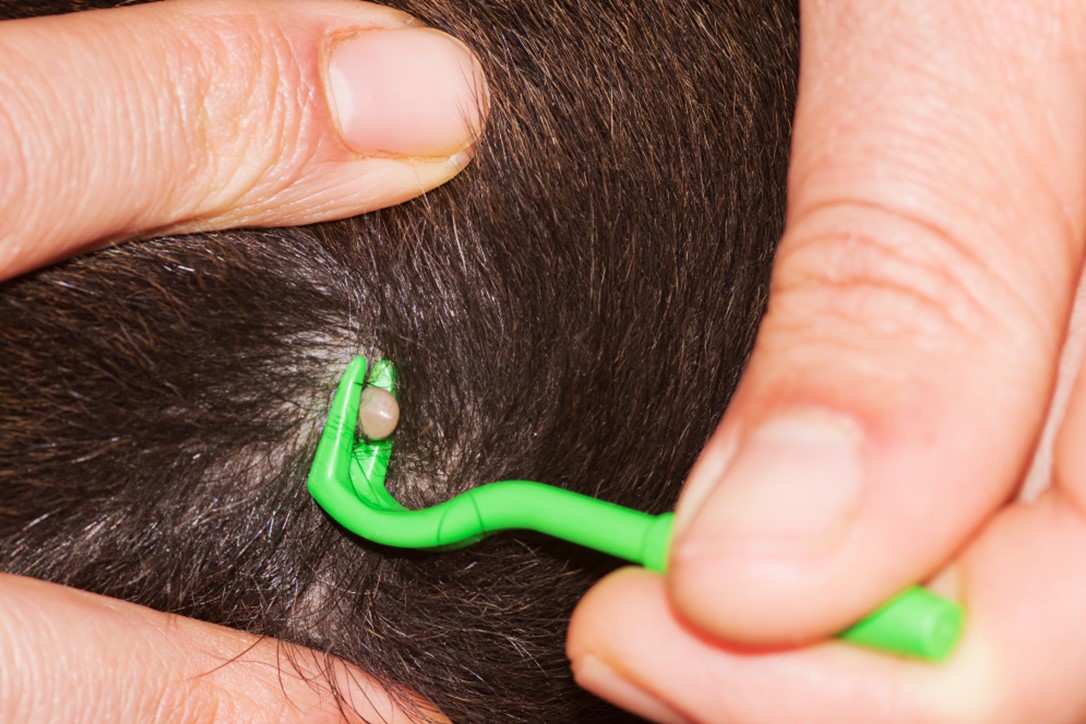Lyme Disease
Article courtesy of Admiral Pet Insurance in-house veterinary nurse, Nicki Fox.

What is Lyme Disease?
Lyme disease comes from a bacteria found in ticks called Borrelia, also known as ‘Borreliosis’. When the tick attaches, its saliva enters the bloodstream, leading to the bacteria to travel to various tissues and organs. Dogs are receptible to the disease by being bitten by an infected tick, although most dogs that that are bitten will not become unwell (only approximately 1.5% of ticks carry this bacteria in the UK). However, it is important to keep an eye out for symptoms as if left untreated, Lyme Disease can result in chronic illness.
2. What are the signs of Lyme Disease in dogs?
Whilst Lyme Disease can manifest itself differently from dog to dog, some might not show any signs at all. It’s also important to note that symptoms typically only appear between 2–5 months after the bite. Some common signs to look out for in your dog are:
-
Lameness: This comes from inflammation of the joints, which is also one of the most recognised signs that your dog has Lyme Disease. Lameness can come and go, but also shift from one leg to another. This usually starts in the joints closet to the tick bite.
-
Fever (high temperature): Your dog can also develop a fever, which can lead to loss of appetite.
-
Joint pain: Stiffness or signs of joint pain, especially during movement, can be a sign of Lyme Disease.
-
Swollen lymph nodes: Your dog’s lymph nodes might be enlarged, especially around the affected joints.
-
Depression: If your dog is infected, you might notice changes in their behaviour.
-
Lethargy: Your dog might get exhausted and sluggish from the illness, which you’ll notice in a reduced level of activity.
-
Reduced appetite: Your dog’s appetite will be noticeably reduced when they’re unwell.
-
Increased drinking and urination: Your dog may drink or urinate more than usual.
Tick prevention
Peak tick reason is usually during spring and summer, so being more observant during those months is crucial. Ticks are common in wooded areas, forests and grasslands. Preventing tick bites will reduce the risk of Lyme Disease and other illnesses. Use veterinarian-recommended and prescribed tick control products to prevent the tick attaching. These can be topical, collars or oral tick products. These can repel and kill ticks on your dogs if you use them correctly.
Check your dog regularly, paying particular attention to the ears, between toes, under the legs and around their neck.
Purchase a tick remover from your vet or online. Do not be tempted to remove the tick with tweezers or your fingers as the head is likely to be left in the dog’s skin when the body is pulled away, or you could end up pushing the blood back into the dog’s body. I keep an O Tom Tick Twister in my dog walking bag which contains clear instructions to remove the tick in its entirety.
What to do if you suspect your dog might have Lyme Disease
If you suspect your dog might have Lyme Disease, you should consult with your vet as soon as possible to reach a proper diagnosis.
Related Articles
Get the latest news delivered direct to your door
Subscribe to Gundog Journal
Unlock the full potential of your working dog with a subscription to Gundog Journal, the UK’s only dedicated magazine for gundog enthusiasts. Published bi-monthly, this authoritative resource delivers expert training advice, in-depth interviews with top trainers and veterinary guidance to help you nurture a stronger bond with your dog.
With stunning photography and thought-provoking content, Gundog Journal is your essential guide to understanding, training and celebrating your working dog.
Save 10% on shop price when you subscribe, with a choice of packages that work for you. Choose from Print & Digital or Digital only with each journal delivered directly to your door or via the app every other month, plus access to past issues with the digital back issue library.








